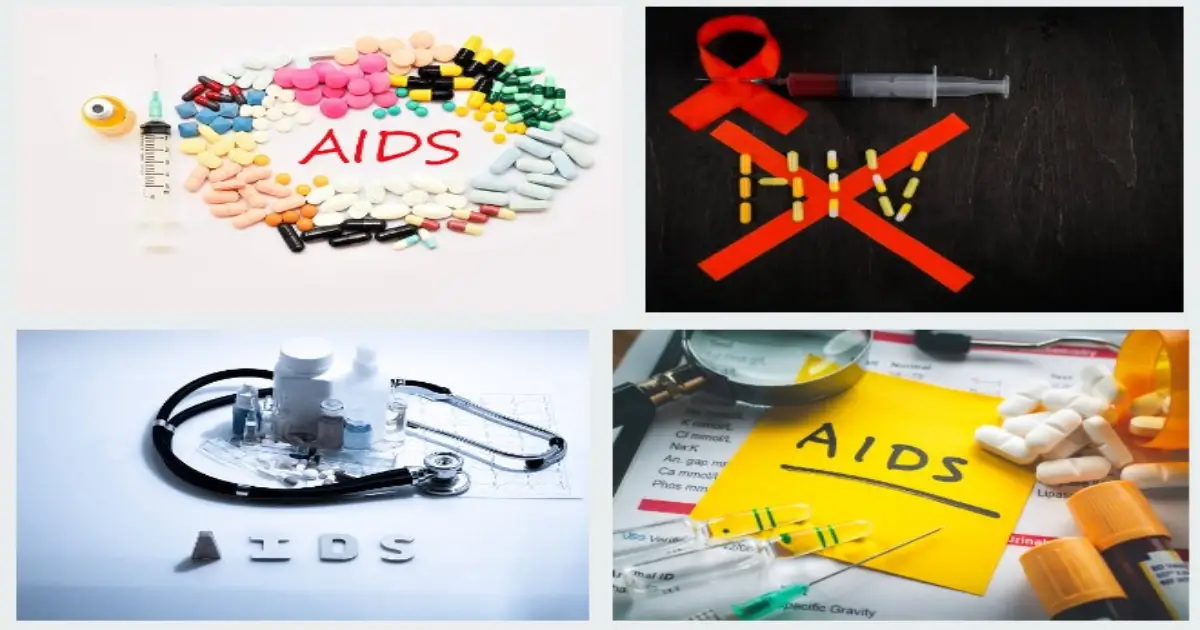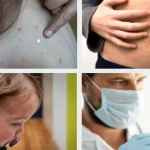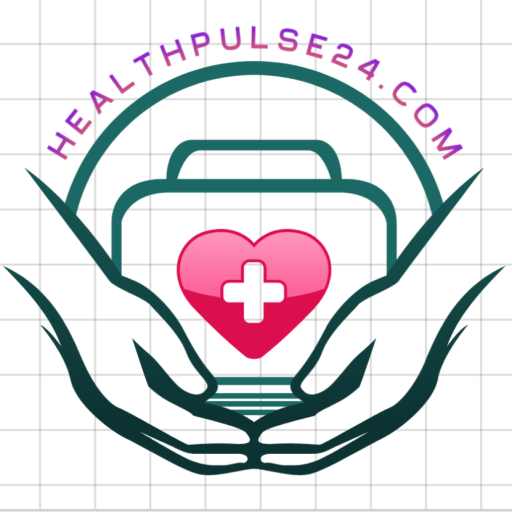HIV (Human Immunodeficiency Virus) and AIDS (Acquired Immunodeficiency Syndrome) remain among the most critical public health issues globally. This guide covers everything from symptoms and causes to diagnosis and treatment, ensuring readers get an in-depth understanding of this life-altering condition.
What is HIV?
HIV is a virus that attacks the immune system, specifically targeting CD4 cells (T cells), which help the body fight infections. Without treatment, HIV reduces the number of these cells, making the body more vulnerable to infections and certain cancers.
What is AIDS?
AIDS is the final and most severe stage of HIV infection. It is diagnosed when the immune system becomes severely damaged, and the body can’t fight off opportunistic infections or certain cancers.
ifference Between HIV and AIDS
| Feature | HIV | AIDS |
|---|---|---|
| Definition | A virus causing immune deficiency | A condition resulting from untreated HIV |
| Diagnosis | Blood test for virus | CD4 count <200 or presence of specific infections |
| Reversible | Yes, with treatment | Partially, but irreversible damage may occur |
| Life Expectancy | Can be normal with ART | Reduced without treatment |
How HIV Spreads
HIV is transmitted through:
- Unprotected sexual intercourse
- Sharing needles or syringes
- Blood transfusions with infected blood
- From mother to child during pregnancy, childbirth, or breastfeeding
Early Symptoms of HIV
Common early symptoms (within 2-6 weeks of infection) include:
- Fever
- Sore throat
- Rash
- Swollen lymph nodes
- Muscle aches
These symptoms resemble flu or mononucleosis and may go unnoticed.
Advanced HIV Symptoms
As HIV progresses:
- Chronic fatigue
- Significant weight loss
- Night sweats
- Diarrhea lasting more than a week
- Memory loss
Opportunistic Infections
HIV weakens the immune system, allowing infections such as:
- Tuberculosis
- Pneumocystis pneumonia
- Toxoplasmosis
- Candidiasis
- Cytomegalovirus
Stages of HIV Infection
- Acute HIV Infection: Flu-like symptoms
- Chronic HIV Infection: Asymptomatic phase
- AIDS: Severe immune damage, opportunistic infections
Causes of HIV Infection
HIV is caused by:
- Contact with infected bodily fluids
- Unsafe sexual practices
- Reuse of needles
- Lack of HIV education
Risk Factors for HIV
Higher risk is seen in:
- Unprotected sex with multiple partners
- Men who have sex with men
- IV drug users
- Infants born to HIV-positive mothers
Diagnosis and Testing for HIV
Common tests include:
- ELISA and Western Blot
- Rapid antibody tests
- Nucleic Acid Tests (NATs)
- Home test kits
Window Period of HIV
The “window period” is the time between HIV exposure and the point when a test can detect the virus. It typically ranges from 10 days to 3 months.
HIV Transmission Myths vs Facts
| Myth | Fact |
|---|---|
| HIV spreads via kissing | False – saliva does not transmit HIV |
| HIV can be cured | False – there is no complete cure yet |
| Only gay men get HIV | False – anyone can get HIV |
| Mosquitoes spread HIV | False – no evidence supports this |
Prevention of HIV
- Use condoms during sex
- Regular HIV testing
- Avoid sharing needles
- Use of PrEP (Pre-exposure prophylaxis)
- ART for pregnant women
Use of Antiretroviral Therapy (ART)
ART involves a combination of medications that:
- Reduce viral load
- Improve immune function
- Lower risk of transmission
ART is lifelong and must be taken consistently.
HIV Treatment Guidelines

Global guidelines recommend:
- Starting ART immediately after diagnosis
- Monitoring viral load and CD4 count
- Using first-line and second-line drug regimens based on response
Side Effects of ART
- Nausea
- Dizziness
- Liver toxicity
- Fat redistribution
- Insomnia
Adjustments in medication may be needed to manage side effects.
Drug Resistance in HIV
Resistance occurs when HIV mutates to escape ART drugs. Causes include:
- Skipping doses
- Incorrect dosage
- Substandard medications
Drug resistance testing is crucial before modifying treatment.
Living with HIV
With proper treatment, people with HIV can:
- Lead long, healthy lives
- Work and raise families
- Engage in relationships safely
Lifestyle changes, such as diet and exercise, help maintain health.
Psychological Impact of HIV/AIDS
HIV diagnosis may lead to:
- Depression
- Anxiety
- Stigma-related stress
Support groups and mental health counseling are vital.
HIV in Women
Women may experience:
- Increased vaginal infections
- Menstrual irregularities
- Higher risk of cervical cancer
- Complications during pregnancy
HIV in Children
Children can acquire HIV through:
- Birth
- Breastfeeding Symptoms include:
- Growth delays
- Frequent infections
Early treatment greatly improves outcomes.
HIV and Pregnancy
HIV-positive mothers can:
- Deliver healthy babies with ART
- Avoid breastfeeding if safe alternatives exist
- Undergo cesarean section to reduce transmission risk
Social Stigma and HIV
Stigma causes:
- Social isolation
- Job discrimination
- Reluctance to get tested
Education and awareness reduce stigma.
Future of HIV/AIDS Treatment
Promising developments:
- Long-acting ART
- HIV vaccines in clinical trials
- Gene therapy
- Potential functional cures
FAQs
Q1. Can HIV be cured?
No, but it can be controlled effectively with ART.
Q2. What is the life expectancy of someone with HIV?
With treatment, it can be nearly the same as a person without HIV.
Q3. How soon after exposure can HIV be detected?
Detection is possible as early as 10 days, but confirmatory testing is usually done after 1-3 months.
Q4. Can HIV spread through kissing?
No, HIV does not spread through saliva.
Q5. What should I do if I think I was exposed to HIV?
Seek medical attention immediately for post-exposure prophylaxis (PEP).
Q6. Is HIV only a concern for gay men?
No, it affects people of all orientations and genders.
Q7. How does ART help people with HIV?
It reduces the viral load, maintains immune function, and prevents transmission.
Q8. Can I have a baby if I’m HIV positive?
Yes, with proper treatment and care, healthy childbirth is possible.
Q9. What is PrEP?
PrEP is a medication taken before exposure to reduce the risk of acquiring HIV.
Q10. Can I live a normal life with HIV?
Yes, with consistent treatment and a healthy lifestyle.
HIV and Co-infections (e.g., TB, Hepatitis)
People with HIV are more prone to co-infections such as:
- Tuberculosis (TB) – the leading cause of death among people with HIV.
- Hepatitis B and C – more severe and common due to shared transmission routes.
- Early detection and co-management improve treatment outcomes.
HIV and Nutrition
Proper nutrition supports:
- A stronger immune system
- Better absorption and effectiveness of ART
- Recovery from infections
Recommended:
- High-protein, high-energy diets
- Micronutrient supplements (e.g., zinc, vitamin A)
Global Statistics and HIV Prevalence
As of recent WHO/UNAIDS data:
- Over 38 million people live with HIV globally.
- Sub-Saharan Africa remains the most affected region.
- Infection rates are rising in Eastern Europe and parts of Asia.
HIV/AIDS in Developing Countries
Challenges include:
- Limited access to ART
- Social stigma
- Underfunded healthcare systems Programs like PEPFAR and the Global Fund support treatment and education.
HIV Testing and Counseling (HTC)

Testing and counseling help:
- Early diagnosis and treatment
- Reduce transmission
- Provide emotional and psychological support
HTC is now widely available via clinics, mobile units, and self-testing kits.
HIV Criminalization Laws
In some countries, not disclosing HIV status can lead to:
- Criminal prosecution
- Incarceration This discourages testing and transparency. Many health experts advocate for legal reforms.
HIV and Aging
Due to ART, many HIV patients now live into old age, facing:
- Cardiovascular diseases
- Bone density loss
- Cognitive decline
HIV care must adapt to geriatric challenges.
Role of NGOs and Community Health Workers
Non-profits and volunteers:
- Promote awareness and prevention
- Offer HIV testing and counseling
- Reduce stigma in underserved areas
Community-led programs have proven crucial in fighting the epidemic.
Digital Tools and HIV Management
Technology aids include:
- Mobile apps for medication reminders
- Telehealth for consultations
- Digital outreach for prevention campaigns
eHealth tools improve adherence and access to care.
HIV Vaccine Research and Cure Trials
Promising areas of research:
- mRNA-based vaccines
- Broadly neutralizing antibodies (bNAbs)
- CRISPR gene editing Though no cure exists yet, some trials show significant breakthroughs.
Updated Comparison Table: HIV vs Other STIs
| Feature | HIV | Syphilis | Gonorrhea | Herpes |
|---|---|---|---|---|
| Cause | Virus (HIV-1, HIV-2) | Bacteria | Bacteria | Virus (HSV-1, HSV-2) |
| Curable | No | Yes | Yes | No |
| Transmission | Blood, sex, mother-to-child | Sex, pregnancy | Sex | Sex, skin contact |
| Prevention | Condoms, PrEP, ART | Condoms | Condoms | Condoms, antiviral meds |
| Symptoms | Fever, rash, weight loss | Sores, rash | Discharge, pain | Blisters, itching |









